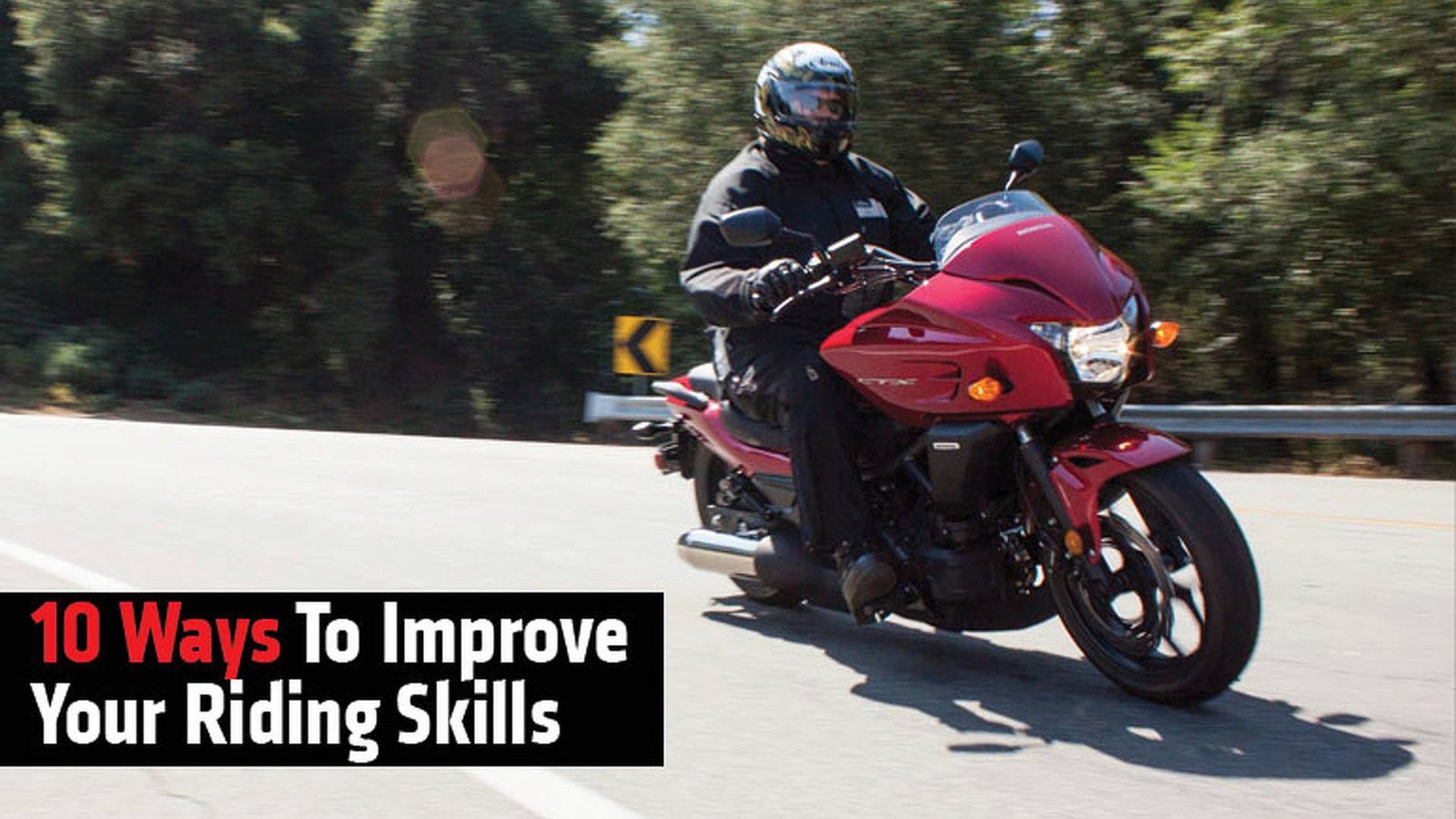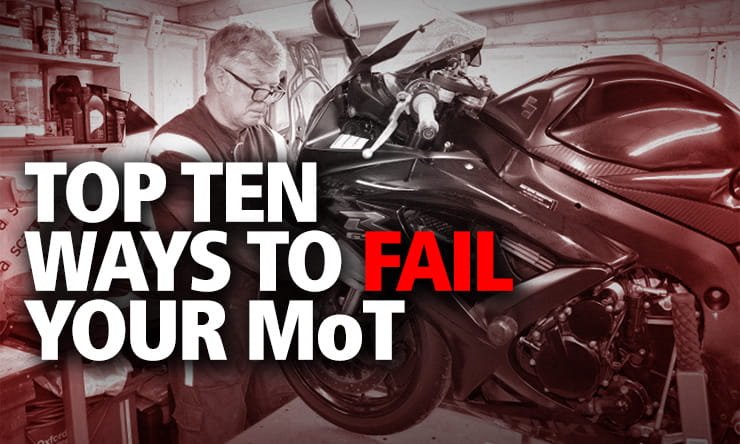To improve your motorcycle riding skills, practice regularly and take advanced riding courses. Focus on fine-tuning your technique and understanding your bike’s dynamics.
Motorcycle riding is a thrilling and liberating experience, yet it demands skill, confidence, and control. Whether you’re a beginner or an experienced rider, there’s always room for improvement. Enhancing your motorcycle riding abilities ensures a safer and more enjoyable ride.
Gaining proficiency involves a mix of dedicated practice, continuous learning, and a deep appreciation for riding safety. Rider courses designed by experts can provide invaluable insights into the nuances of motorcycle handling, while consistent practice helps to embed these skills into muscle memory. Embracing these strategies will not only make you adept at maneuvering through challenging situations but will also enrich your overall riding experience. Always remember, the key to becoming an expert rider lies in the commitment to never stop learning and honing your skills.
Table of Contents
The Importance Of Continuous Learning In Riding
Continuous learning is the cornerstone of excellence in any skill, especially in motorcycle riding. Riders often think that once they know the basics, they’re ready to hit the road with full throttle. Yet, mastering the art of riding well means never stopping the quest for improvement. Here lies the significance of embracing a philosophy of lifelong learning.
Building A Safety Mindset
The first step to becoming a better rider is developing a safety mindset. This means always thinking ahead and being prepared. Safe riding habits are not just about following road laws. They are about recognizing potential hazards before they become problems. By continually educating yourself on safety best practices, your riding becomes not just a hobby, but a reflection of responsibility.
- Always wear appropriate gear, even for short trips.
- Understand and respect road and weather conditions.
- Regularly attend refresher courses or safety workshops.
- Maintain your motorcycle to ensure it’s in peak condition.
Benefits Of Skill Advancement
Advancing your skills as a rider brings a multitude of benefits. Confidence on the road comes with a strong foundation in riding. Every new skill you master contributes to smoother and more enjoyable rides. It can also mean the difference between a close call and a collision.
| Skill | Benefits |
|---|---|
| Cornering | Enhanced control and reduced risk of accidents on bends. |
| Braking | Ability to stop quickly and safely, especially in emergencies. |
| Balance | Better maneuverability at low speeds and when stationary. |
With each new skill, you not only enhance your own safety but also set an example for other riders. Your dedication acts as a beacon for the riding community, proving that skill advancement should never be in the rear-view mirror.
Whether you enroll in advanced riding courses, practice deliberately, or stay updated with the latest safety technology, the journey of enhancing your skills is endless. Strive for excellence, keep learning, and the road ahead will be a rewarding one.
Starting With The Basics: Riding Courses And Training
Welcome to the exciting path of enhancing your motorcycle riding prowess! Embarking on this journey begins with the fundamental step of enrolling in a riding course or training program. This initial stride is not just about acquiring new skills or refining existing ones, but about understanding the importance of proper riding techniques that will ensure your safety on the road. Whether you’re a beginner or aiming to elevate your skills, these structured learning experiences offer invaluable insights for riders at all levels.
Choosing The Right Motorcycle Course
Selecting an appropriate motorcycle course is the gateway to a safer and more enjoyable riding experience. Consider your current skill level and what you aim to achieve. Do you need a beginner’s class, or are you ready for advanced maneuvers? Match the course to your needs to get the most out of your training.
- Basic Rider Courses – Ideal for novices, covering essential skills.
- Intermediate Courses – Bridge the gap between basic knowledge and proficient riding.
- Advanced Rider Courses – Sharpen skills like high-speed handling and emergency responses.
Building A Strong Foundation With Professional Guidance
Success in motorcycle riding hinges on a strong foundation, which is best established under the watchful eyes of experienced instructors. Professional guidance provides personalized feedback, allowing you to correct mistakes promptly and develop confidence. These instructors bring a wealth of knowledge, sharing nuanced tips that are often overlooked but crucial for expert riding.
| Training Aspect | Benefits |
|---|---|
| Personalized Coaching | Addresses individual rider needs and skill gaps. |
| Expert Techniques | Learn the tricks of the trade for better control and safety. |
| Safe Practice Environment | Master skills in a controlled setting before hitting the road. |
Remember, the road to mastery requires patience, dedication, and the right training. Embrace the learning curve, prioritize your safety, and enjoy the ride!
Mastering Motorcycle Control
To elevate your motorcycle riding skills, gaining a solid grip on bike control is essential. Practicing precise throttle management and understanding braking dynamics profoundly affects your ride’s smoothness and safety. This part of the journey is not just about steering and leaning; it involves a harmonious blend of multiple control techniques that, when mastered, transform a good rider into a great one.
Throttle Management Techniques
Managing the throttle requires finesse and precision. It’s about more than just twisting the grip; it’s a skill that demands smooth operations to maintain traction and control. Here are some techniques that can help:
- Roll on the throttle gradually when accelerating to prevent abrupt changes.
- Maintain a steady grip during turns to keep a consistent speed.
- Practice throttle blipping, for downshifts to match engine speed for smoother transitions.
Breaking Patterns And Their Impact On Stability
Effective braking is pivotal for stable motorcycle handling. Inappropriate braking can lead to loss of control. Awareness of different braking patterns allows you to react correctly to various scenarios.
| Braking Pattern | Stability Impact |
|---|---|
| Smooth, progressive brake application | Enhances stability by distributing weight evenly |
| Stomping on the rear brake | Can cause skidding and loss of control |
| Front brake only usage | Heightens risk of overturning, especially in turns |
Understanding these patterns encourages the rider to apply brakes effectively, maintaining stability and ensuring a safer experience.

Credit: www.rideapart.com
Advanced Riding Techniques
Ready to take your motorcycle riding up a notch? Mastering Advanced Riding Techniques not only sharpens your skills but also boosts your confidence on the road. Gain control and enjoy the thrill of riding as we delve into high-speed maneuvers and the art of navigating curves with finesse.
High-speed Maneuvers
Exhilaration soars when speed increases, yet precision is paramount. Practice these steps to refine your high-speed riding:
- Throttle control: Smoothly roll on and off the throttle to maintain stability.
- Braking: Apply brakes progressively; never snatch.
- Body position: Stay relaxed but alert, with a slight lean forward.
Refine these skills in a safe environment. Empty parking lots or tracks are ideal spots.
Navigating Curves With Precision
Corners test a rider’s finesse. Perfect your technique with these pointers:
- Look ahead: Your bike follows your eyes, so fix your gaze through the turn.
- Lean: Combine body and bike lean to carve a smooth arc.
- Throttle Maintenance: Maintain steady throttle to balance the bike.
Curves differ, so approach each one uniquely. Practice on familiar roads to build up your skills.
Practicing Defensive Riding
Practicing Defensive Riding is key to staying safe on the road. Riders who master this skill can better handle unexpected situations. Staying alert, being visible, and knowing how to respond quickly can make a huge difference. Let’s explore the techniques that will sharpen defensive riding abilities.
Anticipating Road Hazards
Effective defensive riding starts with spotting potential dangers before they become emergencies. This means always scanning the road and staying aware of your surroundings.
- Watch for potholes, gravel, debris, and uneven surfaces.
- Observe the behavior of other drivers. Are they distracted? Erratic?
- Note changing weather conditions that could affect the road.
Training your eyes to notice these hazards takes practice. Build this habit each ride.
The Art Of Quick Decision Making
Making fast decisions can save your life. To improve, practice these steps:
- Identify: Look ahead and spot potential issues.
- Decide: Choose the best course of action.
- Execute: Do it smoothly, without panic.
Ride with seasoned bikers to observe their decision-making. Regularly review your rides to learn from them.

Credit: scenic.app
The Role Of Proper Gear In Skill Enhancement
The Role of Proper Gear in Skill Enhancement is often underestimated in the realm of motorcycle riding. Yet, it serves as the foundation for both safety and improved performance. The right gear not only protects riders in unexpected circumstances but also dramatically enhances their control and confidence on the road. Let’s delve into how choosing the correct helmet and protective clothing can pave the way for sharpening riding skills.
Choosing The Right Helmet
Selection of a helmet is critical for riders. It must meet safety standards and fit perfectly. A well-fitting helmet keeps distractions at bay, allowing riders to focus on the road. Features like anti-fog visors and proper ventilation contribute to better vision and comfort. Consider the following points:
- Size: Measure your head’s circumference for accurate sizing.
- Standards: Look for DOT or ECE certifications.
- Comfort: Check for snug fit, without being too tight.
- Visibility: Ensure wide field of vision.
Protective Clothing
Protective clothing guards against injuries and weather elements. It also enhances rider maneuverability. Jackets, pants, gloves, and boots should be made from durable materials like leather or advanced textiles. Armor in jackets and pants provide extra protection. For selecting protective gear, note these essentials:
- Material Quality: High-quality materials resist abrasion.
- Fit: Gear must be snug but allow full range of motion.
- Weather-Ready: Opt for waterproof and ventilated options.
- Visibility: Choose gear with reflective elements.
How Gear Affects Riding Performance
Well-chosen gear drastically impacts riding skills. It boosts confidence, ensuring riders remain focused and agile. Helmets reduce wind noise, clothing reduces fatigue, and gloves improve grip on the handlebars. To summarize the benefits:
| Gear | Benefits |
|---|---|
| Helmet | Less noise, better focus, and protection. |
| Clothing | Less fatigue, more comfort, and flexibility. |
| Gloves | Better grip, control, and hand protection. |
Investing in the right gear is investing in riding prowess. Take the time to select the best helmet and protective clothing; it’s a small price for the great leaps in performance and skill development.
Physical And Mental Fitness For Riders
Mastering motorcycle riding takes more than just balancing on two wheels. Physical and mental fitness are vital components that often go unnoticed. Riders must nurture both to tackle the roads with confidence and skill.
Exercises To Improve On-bike Performance
Riding a motorcycle is a full-body workout. Specific exercises can boost your riding abilities.
- Core Workouts – A strong core means better balance.
- Leg Exercises – Improve support and control.
- Cardio – Enhance stamina for long rides.
Follow this simple routine:
- Planks – Hold for 1 minute, repeat 3 times.
- Squats – 3 sets of 15 reps.
- Biking or Running – 30-minute session, three times a week.
Consistency is key. Aim for a schedule and stick to it.
The Importance Of Mental Alertness
Riding requires focus. Mental alertness is crucial for safety and improved performance.
| Tip | Description |
|---|---|
| Breaks | Take frequent short breaks to avoid fatigue. |
| Hydration | Keep hydrated to maintain concentration. |
| Sleep | Ensure 7-8 hours of quality sleep. |
Engage in activities that promote concentration. Try puzzles or games that boost brain power.

Credit: www.bennetts.co.uk
Joining A Community Of Riders
Improving your motorcycle riding skills is an exciting journey, and joining a community of riders can turbocharge your skills. With the support and tips from other enthusiasts, you become part of a world where every ride is a lesson and every interaction brings new insights.
Learning From Experienced Motorcyclists
Riding solo helps, but the real growth happens when you ride with others. Here’s why:
- Sharing knowledge: Seasoned riders have a wealth of tips and tricks.
- Observation: Watching veterans maneuver can teach you new techniques.
- Feedback: They can spot and correct your mistakes in real-time.
Participating In Group Rides And Events
There’s more to group rides than just fun. Let’s dive in:
- Build Confidence: Riding in a pack can help ease anxiety.
- Improve Skills: You learn group riding etiquette and skills.
- Discover Routes: Group rides can take you on new adventures.
Remember, every rider started as a beginner. With a community, you’ll be zipping through learning curves.
Setting Personal Riding Goals And Tracking Progress
Improving motorcycle riding skills begins with setting clear, achievable goals. Personal riding goals give direction to your practice and help maintain focus. Whether aiming to increase confidence on the road, mastering tight turns, or reducing lap times, specific targets are vital. Tracking progress is equally important as it provides insights into your development and keeps you motivated.
Incremental Improvement Strategies
- Start small: Focus on one skill at a time to avoid feeling overwhelmed.
- Create milestones: Break down your main goal into manageable steps.
- Ride regularly: Consistent practice is key to muscle memory and skill retention.
- Seek feedback: Get advice from experienced riders or instructors to refine your technique.
- Be patient: Recognize that improvement takes time and effort.
Using Technology And Apps For Skill Tracking
Technology offers innovative ways to monitor riding skills. Various apps can track routes, speed, and lean angles, providing valuable data for analysis. Below are popular tools to aid your skill-tracking:
| App | Features | Benefit |
|---|---|---|
| Rever | GPS route tracking, community challenges | Visual progress on maps, social motivation |
| EatSleepRIDE | Crash detection, ride stats | Safety alerts, detailed performance info |
| MyRide | Riding diary, leaderboards | Personal records, compare with others |
Digital tools make tracking your motorcycle riding progress straightforward and fun. Regularly reviewing this data will spotlight areas needing attention and confirm skills mastered, encouraging continual development.
Conducting Regular Bike Maintenance
Conducting regular bike maintenance is pivotal for any motorcyclist aiming to improve their riding skills. A motorcycle in top condition responds better to control inputs, ensuring rider safety and performance. By keeping your motorcycle well-maintained, you set the stage for enhanced handling, quicker responses, and a more enjoyable ride.
Understanding Your Motorcycle’s Mechanics
Gaining a solid grasp of your motorcycle’s mechanics forms the bedrock of effective maintenance. Familiarize yourself with your motorcycle’s manual. It holds a wealth of information on upkeep specific to your bike.
- Check the manual to understand maintenance schedules.
- Learn basic tasks such as oil checks, tire pressure, and brake inspections.
- Tool up with the essential equipment for routine servicing.
The Impact Of Maintained Bikes On Riding Skills
Regular maintenance doesn’t just prevent breakdowns; it directly affects your riding proficiency. A well-maintained bike is more predictable and reliable. This predictability allows you to focus on improving your skills rather than on unexpected mechanical issues.
| Maintenance Task | Riding Skill Benefit |
|---|---|
| Brake adjustment | Enhanced stopping power and control |
| Chain tensioning | Smooth power delivery and handling |
| Tire pressure check | Better grip and stability in turns |
Frequently Asked Questions On How To Improve My Motorcycle Riding Skills
What Are Essential Motorcycle Skills?
Proper motorcycle control involves essential skills like smooth throttling, braking, and clutch use. Mastering these basics ensures a stable ride and prevents accidents. Regular practice is key to becoming proficient.
How To Practice Cornering On A Motorcycle?
Effective cornering requires practice. Start with slow, gentle curves, focusing on your body position and eye level. Gradually increase speed as confidence builds, always within safe limits and road conditions. Advanced courses can sharpen these skills.
Can Simulators Help Improve Riding Skills?
Yes, motorcycle simulators can enhance your riding skills. They provide a risk-free environment to practice various scenarios and refine reactions. They’re especially useful for beginners and those looking to improve their techniques without on-road risks.
What Are The Best Drills For Motorcycle Training?
The best drills include emergency stops, swerving, and figure-eight maneuvers. These drills improve reaction time, agility, and bike handling. Practice in a safe, controlled area and consider professional training to ensure proper technique.
Bottom Line
Elevating your motorcycle riding skills requires consistent practice and a commitment to safety. By embracing a learner’s mindset, seeking expert guidance, and prioritizing repetition, you’ll craft a ride that’s both enjoyable and secure. Remember, every pro was once a beginner—keep riding, keep learning.
Ready to hit the road? Your journey to mastery awaits.



Leave a Reply